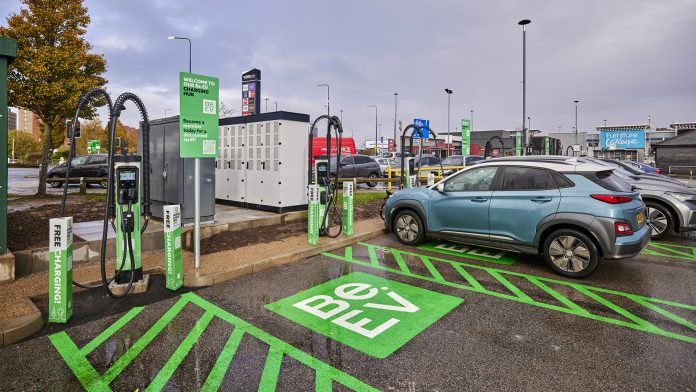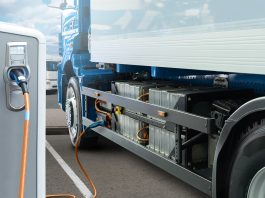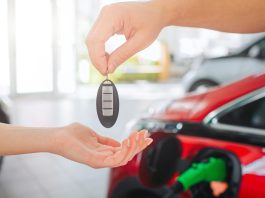Adrian Fielden-Gray, COO of Be.EV, shares his top tips for EV charging and explains how easy it is to make sure they don’t get caught up in queues.
If you’re considering buying an electric vehicle, then you may have been led to believe that EV charging will be a hassle. Whether it’s reports of ‘charging chaos’ or stories about motorway service stations hiring staff to manage queues, the headlines paint an exaggerated picture of many drivers’ real experiences.
As an EV driver myself, it’s clear that these articles don’t accurately reflect the reality of charging your car. It’s a seamless process, yet perceptions of poor public charging provisions are muddying the waters for prospective EV drivers.
The problems frequently cited by EV critics – like range anxiety or charge rage – are easily solved with a little understanding of how EV batteries work and the basics of charging etiquette.
From my years of driving my Kia EV6, I’ve learned several tricks that drivers can use to avoid getting caught up in EV charging queues anytime soon.
-
Knowledge is power
Getting to know your types and speeds of chargers will streamline your trip:
- ‘Slow’ is what you see with lamppost chargers. These take a (very) long time to charge and are pretty inefficient
- ‘Fast’ points, despite the name, still take a while to charge. You’ll see them at offices or on your driveway and need to be plugged in overnight or throughout the day for several hours to get a good charge
- ‘Rapid’ points charge within around an hour or two and are perfect if you’re heading out to get your steps in or go shopping
- ‘Ultra-Rapid’ will top your car up in as little as 20 minutes, so you’ll be charged up and ready to hit the road after little more than a coffee break
-
A warm battery is a happy battery
EV batteries typically like to be in temperatures similar to our bodies, in the 30ºC range. They work perfectly fine no matter the temperature, but being a little warmer will help them retain the most capacity and charge the fastest.
Some EVs allow you to preheat the battery from home for a long journey or while you’re on the road – helping you roll into a charge stop ready for ultra-rapid speeds.
This is worth bearing in mind – your charge will likely be shortened from battery preheating, even on the warmest of summer days.
-
Little and often is best with EV charging
EV charging is different to filling up a petrol or diesel vehicle. Little and often is usually quicker than one long charge because of the ‘charge curve’ of an EV, which tells us how fast it will ideally charge at each battery percentage.
Typically, EV charging is quickest from 10%-50%. After this, it starts to slow down, and it really tails off beyond 80%. This differs by EV model, so you can check yours on the EV Database.
If you want to spend the least amount of time charging, it’s best to maximise your time charging in the lower half of the curve where the highest speeds are. This may mean two 10%-50% charges versus one 10%-90% charge.
We should be stopping regularly anyway. These sorts of stops aren’t an inconvenience – it’s about safety. They’re a good chance to stretch your legs and reset or simply grab a coffee.
-
There’s more than just service stations
Look for charging options that fit with your travel plans. As of the end of March 2024, there are nearly 60,000 charging points across over 32,000 locations, meaning there’s a good chance there’s a plan B just a minute or so off a direct route.
-
Apps at the ready
There are plenty of apps you can download to manage top-ups and payments and map out charging points (something we built into our Be.EV app). Use these to plan your journey ahead, adding clusters of chargers to your route in case you need them.
-
EV batteries aren’t petrol tanks – they don’t need to be 100% full
Unlike your phone battery, you don’t need to aim for 100% when you’re charging on the road. EV charging often slows down significantly past 80-85% to protect the vehicle’s battery.
Drivers trying to charge to 100% end up extending their charge time unnecessarily – wasting time and blocking the charging bay for other drivers. If you’re nearing ~80% and notice your speed dropping, it’s best to head off to your next stop.
If you’re at a location that’s filling up fast, most drivers are pretty open to trying other local chargers if they’re quieter. Feel free to direct other drivers to these spots to speed up their journey, too.
-
Avoid lamppost EV charging unless you have hours to spare
The average lamppost charger is installed with a ‘slow’ unit, which charges an EV at around 3kW, meaning your modern EV can take well over 15 hours to fully charge.
This is great for charging overnight but certainly won’t do the job if you need a top-up in the middle of a long journey, and it is not great if you’re trying to fit your charging into off-peak slots, either.
-
Slow and steady
Dropping your speed a few miles an hour can really increase your EV’s efficiency. Speed has a huge impact on the aerodynamic drag of your EV, meaning the faster you’re going, the harder your EV is working.
Every mph slower you drive makes it easier to get down the road, leaving you with more miles from each charge.
-
Eco-mode
Most EVs have this as an option. It can do various things for different vehicles, such as dimming the car lights, reducing the power of the heater, or softening the throttle response. Regardless, this all helps to reduce consumption, increase efficiency, and extend range.
-
Don’t leave it till the last minute
It can feel a little stressful hunting for a charger when your car is nearly flat. So, instead of only thinking about charging when you need to charge, think about where you and volt-and-bolt before you’re too low on juice.
This may mean, for example, on a return trip, you charge just before your destination, so when you come to the return leg of your journey, you’re already charged up and ready to hit the road before you’re even low.
Just a few minutes of planning ahead can save you a bunch of worry on a longer trip.
EV charging is nowhere near as complicated as the newspapers make it out. In fact, it’s not complicated at all. Charging is slightly different than filling up your petrol or diesel car, but there’s no reason to panic. Just remember – plan a little, drive efficiently and try to charge fast – then it will be a breeze.









